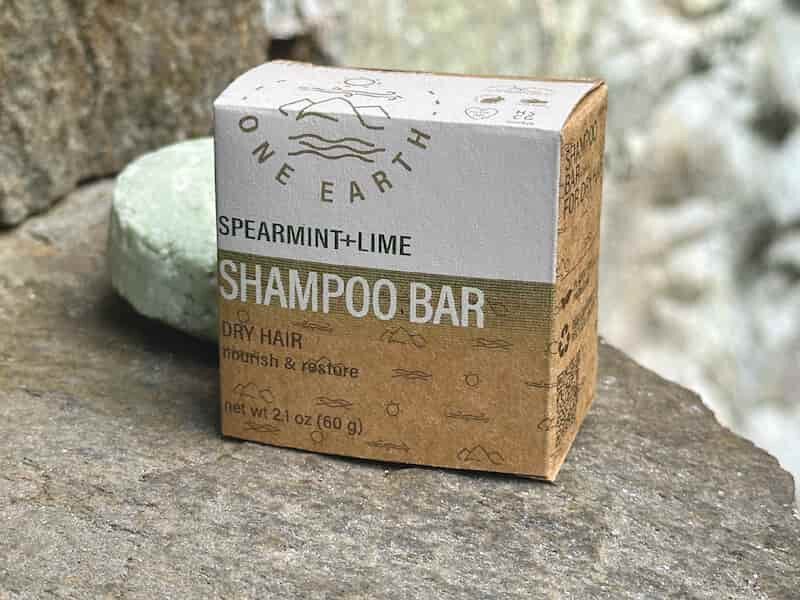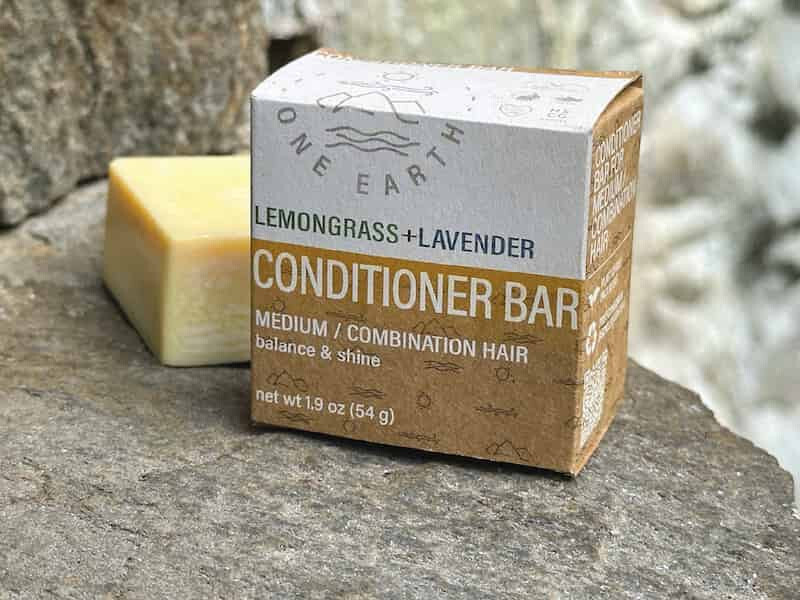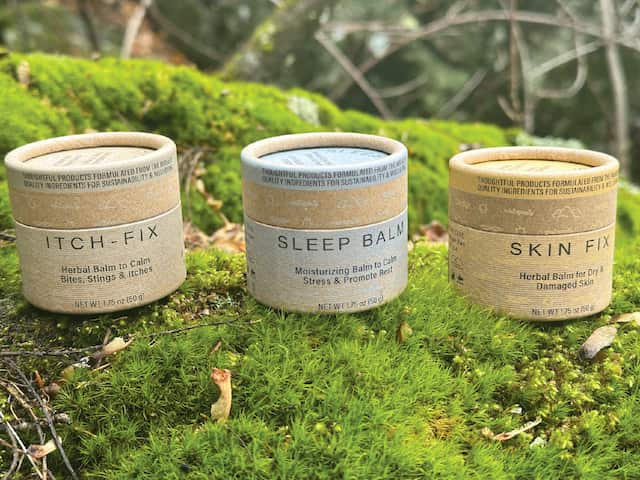We select each of our ingredients to produce premium products while supporting industries and initiatives that are grounded in social and environmental responsibility. We avoid conflict ingredients including palm oil and tallow (animal fat) because of the massive deforestation and destruction of human and ecological communities involved in producing these materials at scale. We strive to stay current on scientific and ecological knowledge about raw materials and will continue to refine our formulas according to sound science and client experience.
This page describes the ingredients in each of our product categories.
SHAMPOO BAR INGREDIENTS:
Not all ingredients are in each shampoo bar - see individual product pages for details.

Sodium cocoyl isethionate: Sodium cocoyl isethionate (SCI) is a mild anionic surfactant based on fatty acids from coconut oil and isoethionic acid, a type of sulfonic acid. SCI creates a rich, foamy lather and gentle cleansing.
Sodium coco sulfate: Sodium coco sulfate (SCS) is an anionic surfactant derived from coconut oil. SCS is high-foaming; it creates flash-foam and luxurious cleansing. We balance SCS with other surfactants (cleansers) to ensure our shampoo bars are gentle.
Coco glucoside: Coco glucoside is a non-ionic surfactant derived from coconut oil and glucose. It enhances foam, rinsability and mildness and helps make the shampoo bar effective in hard water.
Cocamidopropyl betaine: Cocamidopropyl betaine (CAPB) is an amphoteric coconut-derived cleanser. It is a secondary surfactant, used to enhance the lather and cleansing in our oily hair shampoo bars. It offers flash foam and anti-static properties to the bar.
Organic stearic acid (palm-free): Stearic acid is a long-chain fatty acid found in most oils and butters. Our stearic acid is derived from organic flax seeds and organic mahua seeds. Stearic acid gives the shampoo bar structure and adds moisturizing properties.
Organic cocoa butter: Our organic cocoa butter is sourced from Peru and is Fair-Trade certified when available. Cocoa butter is a rich, moisturizing, emollient ingredient that softens and protects curls and helps tame frizz.
Mango seed butter: Mango seed butter is extracted from the dried, de-shelled seeds (pits) of the mango fruit. It is very moisturizing and soothing to skin and scalp. Organic tapioca starch: Organic tapioca starch helps to solidify the bar and absorb excess oil from the scalp. Sodium lactate: Sodium lactate is a humectant and hardens the shampoo bar. Our sodium lactate is derived from beets.
Behentrimonium methosulfate: Behentrimonium methosulfate (BTMS) is an emulsifying conditioner derived from non-GMO rapeseed oil. It’s a great detangler and it helps give hair body and bounce without weighing it down.
Brassica glycerides: Brassica glycerides are a palm oil-free thickener that helps harden the bars, moisturize and protect the scalp.
Panthenol: Panthenol (Vitamin B5) is naturally found in the hair. It helps to build a moisture film on the hair, creating shine, and it can penetrate the hair cuticle and epidermis, helping to increase body and moisturize skin.
Lactobacillus/Arundinaria gigantea ferment: Lactobacillus/Arundinaria gigantea ferment (fermented bamboo) is a natural silicone replacement. It contains silica, adding shine to hair and improving slip. The silica also helps slough dead skin cells from the scalp.
Citric acid: Citric acid is used to adjust the pH of our shampoo bars, to ensure they are in the healthy pH range for hair, skin and scalp (pH 5 to 5.5).
Essential oils: We use natural essential oils to add amazing aromas to our products.
Colorants: We use natural colorants such as organic annatto and turmeric, as well as mineral pigments to color the bars so you (and we!) can tell them apart.
CONDITIONER BAR INGREDIENTS
Not all ingredients are in each conditioner bar - see individual product pages for details.

Cetyl alcohol: Cetyl alcohol is a fatty alcohol and a waxy solid at room temperature. It’s an “occlusive” substance, which reduces evaporation from the hair shaft and helps keep the hair from drying out. The OH on the end of the cetyl alcohol molecule is why it’s called an alcohol. But unlike drying, distilled liquid alcohols such as ethanol, cetyl alcohol is a moisturizing, conditioning fatty compound. It acts as an emulsifier, holding oily and water-based substances together. Read more about different kinds of alcohols here. Brassica glycerides: Brassica glycerides are a palm oil-free thickener that helps harden the bars, moisturize and protect the scalp.
Behentrimonium methosulfate: Behentrimonium methosulfate (BTMS) is an emulsifying conditioner derived from non-GMO rapeseed oil. It’s a great detangler and it helps give hair body and bounce without weighing it down.
Organic cocoa butter: Our organic cocoa butter is sourced from Peru and is Fair-Trade certified [link] when available. Cocoa butter is a rich, moisturizing, emollient ingredient that softens and protects curls and helps tame frizz.
Mango seed butter: Mango seed butter is extracted from the dried, de-shelled seeds (pits) of the mango fruit. It is very moisturizing and soothing to skin and scalp.
Organic Fair-Trade coconut oil: Coconut oil adds a light, silky feel to hair and gives it physical protection. Its small molecular size lets coconut oil penetrate the hair shaft, which conditions and protects it from damage. Our coconut oil is sourced from small-scale farmers in the Philippines who farm an average of 20 acres each. The farmers cultivate up to 60 coconut trees per acre. Many grow legumes, bananas, mangoes or other small fruit trees beneath the coconuts.
Panthenol: Panthenol (Vitamin B5) is naturally found in the hair. It helps to build a moisture film on the hair, creating shine, and it can penetrate the hair cuticle and epidermis, helping to increase body and moisturize skin.
Helianthus annuus (sunflower) seed oil & Bambusa vulgaris (bamboo) extract: Silica-rich bamboo extract helps remove buildup and adds natural shine to the hair. Essential oils: We use natural essential oils to add amazing aromas to our products. https://oneearthbodycare.com/blog/an-introduction-to-essential-oils/
Colorants: We use natural colorants such as organic annatto and turmeric, as well as mineral pigments to color the bars so you (and we!) can tell them apart.
HERBAL BALM INGREDIENTS
Not all ingredients are in each balm - see individual product pages for details.

Organic sunflower oil: Organic high-oleic sunflower oil (Helianthus annuus) is high in Vitamin E and soothing linoleic acid. It softens and protects skin and is noncomedogenic (does not clog pores).
Beeswax: Beeswax thickens the balm and creates a protective layer on the skin. It locks in moisture, is soothing and anti-inflammatory, softens skin and minimizes water loss.
Mango seed butter: Mango seed butter is extracted from the dried, de-shelled seeds (pits) of the mango fruit. It is very moisturizing and soothing to skin and scalp.
Organic jojoba oil: Organic jojoba oil (Simmondsia chinensis) mimics the oils we naturally produce, so it absorbs easily into the skin and balances out our natural oil production. Jojoba oil consists of liquid wax esters like those found in human skin.
Organic extra-virgin olive oil:Organic extra-virgin olive oil is good enough to eat and great for the skin too. It contains soothing polyphenols that help dry, rough and damaged skin.
Organic Fair-Trade coconut oil: Organic Fair-Trade coconut oil absorbs quickly, is soothing and has natural anti-inflammatory properties. Our coconut oil is sourced from small-scale farmers in the Philippines who farm an average of 20 acres each. The farmers cultivate up to 60 coconut trees per acre. Many grow legumes, bananas, mangoes or other small fruit trees beneath the coconuts.
